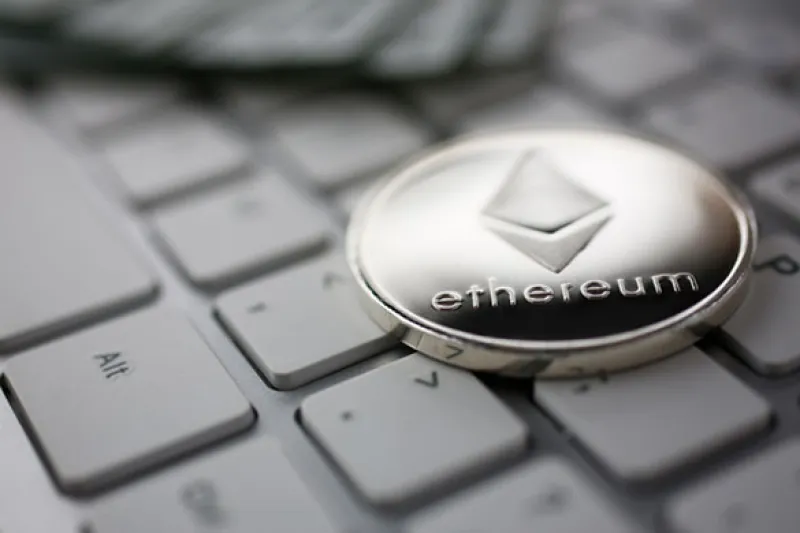While the early news around crypto predicted the sudden emergence of a new financial world, many investors learned fairly quickly that the most popular cryptocurrency, bitcoin, was actually quite limited. Like most traditional assets, you can only do five things with bitcoin: buy, borrow, hold, lend, and sell. These limitations don’t need to apply to more sophisticated forms of cryptocurrency, however. Tapping a more powerful blockchain than bitcoin’s opens up more use cases – such as creating innovative decentralized finance products on the Ethereum blockchain.
The basics of DeFi
A decentralized finance (DeFi) system allows people to create financial products or “smart contracts” that execute actions automatically on the blockchain – without any bank, brokerage, exchange, or corporation acting as an intermediary. This freedom has unleashed great experimentation in creating novel uses for DeFi – such as auctioning off non-fungible (unique) tokens that have famously fetched millions. But there are scores of other more day-to-day uses, as we’ll explore ahead.DeFi is an $80 billion market
At the end of July 2021, the market capital for DeFi products was hovering near $80 billion. While that was down from its May peak of more than $89 billion, pundits expect the figure to rise in the coming year as DeFi projects mature, and as the cryptocurrency industry makes progress on its highly public goal of lessening its environmental impact.
DeFi offers immense freedom and creativity…
“What decentralized finance shows us is that financial instruments can move entirely to the blockchain,” says Philip Gradwell, Chief Economist at Chainalysis, the blockchain data platform. Without the raft of regulations and oversight that other financial products carry, the innovative uses for DeFi are only limited by imagination and creativity of the people writing the smart contracts that govern how any specific product functions.
“With DeFi, you can basically create anything that you want, using other cryptocurrencies and stablecoins to fund new digital assets and products that are financially interesting, without asking permission from any gatekeeper or regulator,” says Gradwell. The aforementioned non-fungible tokens (NFTs) have received great attention, and people are writing DeFi scripts on Ethereum to do other fun stuff like lotteries. “Creating fair, no-loss lotteries that pay out randomly is a popular use of DeFi right now,” Gradwell says.
That said, borrowing and lending are the most common uses. “Investors are also writing complex derivatives contracts that are executed automatically on the blockchain,” says Gradwell. Margin trading and currency swaps are other frequent uses for DeFi. And soon, you’ll see firms that specialize in creating DeFi products targeted to institutional investors.
…and great risk if you skimp on research
On the bad side, creative DeFi products can carry severe risk. For example, in the more naïve years of 2016 and 2017, businesses issued troves of new coins to obscure efforts to raise equity, inviting nasty legal trouble. Scams abound, and even sophisticated investors still fall for them. In June 2021, for example, billionaire entrepreneur Mark Cuban revealed that he had been trading a DeFi token that crashed to zero in a single day and turned out to be a “rug pull” scam designed to fleece everyone but the issuers. He admitted that he had failed to do adequate research.
Before investing with a DeFi crypto product at any non-trivial level, wise investors – institutional and retail – will, of course, confirm that the issuers and their platforms are sound and solvent. They’ll also investigate the blockchain data to gauge risks and the probability that they’ll see the benefits they’re hoping for. Fortunately, the blockchain used most for DeFi – Ethereum – empowers investors to do thorough research.
The advantages of Ethereum
The transparency of Ethereum is a significant advantage to investors. “All the data is right there on the Ethereum blockchain for everyone to see,” says Gradwell. “In traditional centralized finance, a dealer, broker, exchange or corporation will only publish prices because they discovered them on a platform, whereas the Ethereum blockchain shows all activity and where the entire market is sitting at any given time. If you can correctly analyze that blockchain data, you can get a full view of a DeFi product.”
The sophistication of the Ethereum blockchain adds advanced capabilities, too. “You can do more things with Ethereum than bitcoin, as its blockchain code has much more functionality,” says Gradwell. “Metaphorically, if you consider bitcoin’s blockchain to be like a calculator that can add a few numbers, Ethereum is like a computer with a programming language that can run models and simulations, and automatically execute smart contracts.” This is why the Ethereum blockchain offers an entrance into the most innovative and advanced financial instruments in the cryptocurrency world, using DeFi in combination with currency-backed stablecoins and other cryptocurrencies.
On the downside, the powerful Ethereum blockchain consumes a lot of energy, and it’s been a big target of the ESG criticism levied at the cryptocurrency industry. However, Ethereum uses less energy than bitcoin, and developers are planning an upgrade, called Proof-of-Stake, that will minimize its energy use.

Why Ethereum is the “currency of innovation”
Ethereum’s blockchain allows you to provide liquidity for crypto loans and other transactions without actually transferring ownership of your assets – and you can earn fees, revenues and returns on that liquidity backing. “You can fund things without losing anything, and many large investors and venture capitalist firms are currently using Ethereum this way,” says Gradwell. “While you’ll lose the opportunity cost of investing it elsewhere, of course, you’re not actually giving up the title to the capital or putting it at risk. That’s a key difference and advantage of making a DeFi loan using Ethereum.”Does DeFi offer a glimpse of the future?
Trends are signaling that almost all tradeable assets will soon have digitized proxies (often in the form of a cryptocurrency token) for use on a blockchain. “Many institutional investors tell me that they’re envisioning the day when all assets, equities and financial products exist in some form of cryptocurrency, and they want to be ready for that day,” says Gradwell.
Stocks are a likely contender to be digitized first; Apple and Tesla already have crypto tokens circulating that mirror their share price. “I think we’ll see most equities digitized in the next three years,” says Gradwell. “For example, you’ll be able to buy the crypto token version of a traditional company share that trades on Nasdaq.” These tokens will be far more flexible than the traditional shares, he notes, and you’ll be able to trade them 24 hours a day, 365 days a year. “You could even use the tokens as collateral in some new financial instrument that hasn’t been created yet.” says Gradwell.
Using blockchain analysis to vet DeFi opportunities
As more institutional investors seek to incorporate DeFi products into their strategies, performing deep blockchain analysis to vet these products, understand pricing and gauge their status at any given moment will become standard practice.“There’s no published info on the valuation of an asset in DeFi, and you can’t go to an exchange, so you need to rely on the blockchain data to understand pricing, trading volume, and every other detail of the market fundamentals,” says Gradwell. The quality of the blockchain analysis will be a determining factor in choosing the right DeFi instruments for their portfolio strategy.
Learn more about why decentralized finance products are driving demand for Ethereum here.







